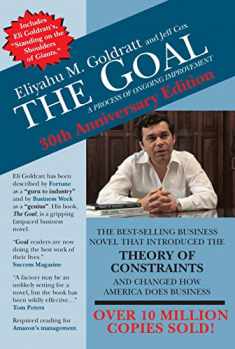
Supply Chain Management: Processes, Partnerships, Performance, 3rd edition
Book details
Summary
Description
Introducing the 3rd edition of Supply Chain Management: Processes, Partnerships, Performance; completely revised and expanded to provide insight on how to implement the key cross-functional supply chain management processes. The new edition includes four completely new chapters and an appendix that provides details on how to develop customer and product profitability reports. The newly added chapters focus on conducting assessments of supply chain management processes, mapping for supply chain management, lean thinking and supply chain management, and implementing and sustaining the supply chain management processes. The eight supply chain management processes provide a comprehensive framework to guide cross-functional teams in their efforts to achieve the integration necessary for managing relationships with key customers and suppliers. However, the successful implementation of any of the supply chain management processes requires that management from all corporate functions understand their role in the process. The challenge is finding a way to bring all the necessary parties together and start the dialogue. In the newly added chapter on assessments, we describe a methodology designed to assist management in the implementation of the supply chain management processes using the assessments tools contained in the book. The assessment of a process will enable management to benchmark the practices of the firm with those prescribed in the process and prioritize the identified improvement opportunities. As supply chain network structures become more complex and geographically dispersed, management can benefit from developing a relationship-based map of their company s supply chain. A newly added chapter on supply chain mapping demonstrates how the visual representation and analysis of the complexities in a firm s direct and indirect supply chain relationships serves as a starting point for increasing the cross-functional and cross-firm communication that is necessary for implementation of the supply chain management processes. The mapping effort also enables management to identify internal and external improvement opportunities and establish the critical relationship linkages that must be closely managed. Once a relationship-based map is developed, a wide variety of activity-based mapping techniques can be used to identify and realize improvement opportunities across the network of companies that constitute the supply chain. Lean thinking provides principles and tools used to eliminate waste and to strive for perfection through continuous improvement. Though lean thinking was conceptualized to apply to all activities within the firm and across companies in the supply chain, in practice lean is employed in operational settings within a single firm. Lean thinking in supply chain management embodies the management s efforts to adopt lean principles to align activities across corporate functions within the firm and to manage business relationships with customers and suppliers. In so doing, additional sources of muda can be addressed. In another of the newly added chapters, we show how lean principles and tools can be used in the context of the supply chain management framework. Also, we describe forms of waste that result from the lack of alignment in the supply chain wastes that need to be eliminated in order to create greatest value for the end-customer. Eleven management components must be considered in order to implement the eight supply chain management processes. The management components apply to all of the supply chain management processes. In the fourth newly added chapter, we describe each of the management components as well as how they can be used to coordinate implementation of the supply chain management processes and institutionalize the processes once they have been implemented.


We would LOVE it if you could help us and other readers by reviewing the book
Book review




